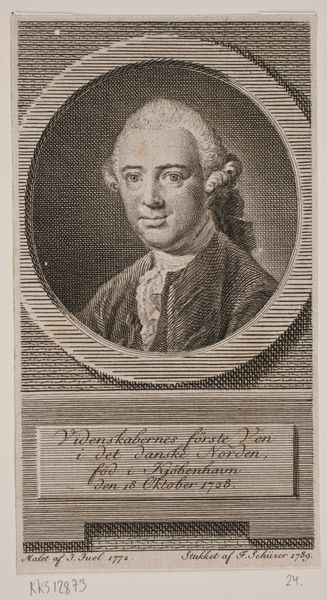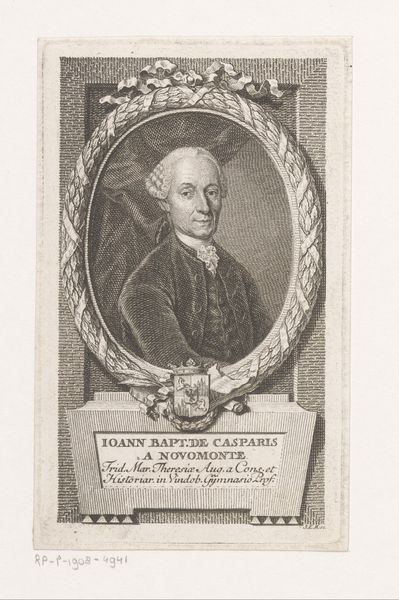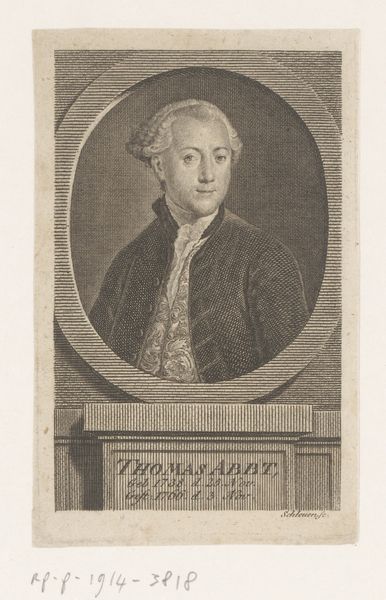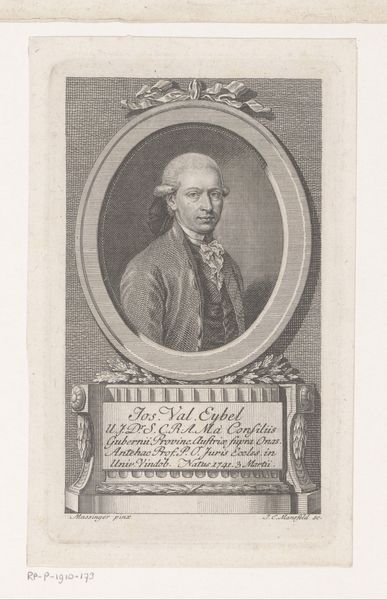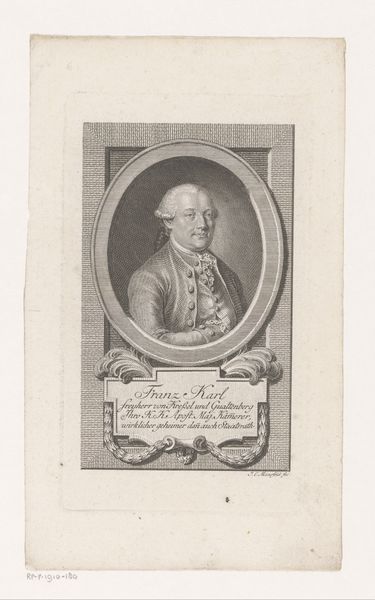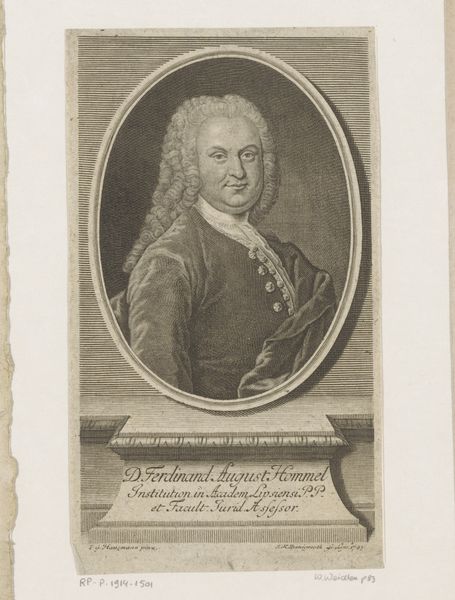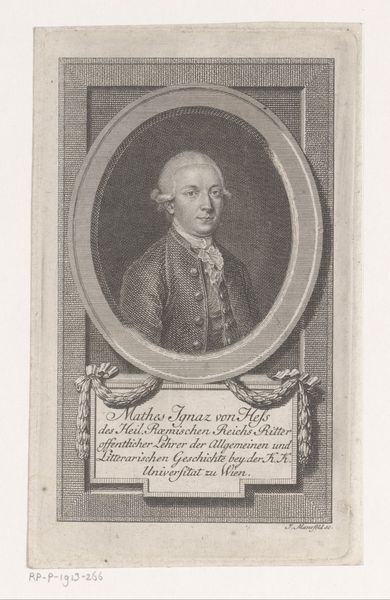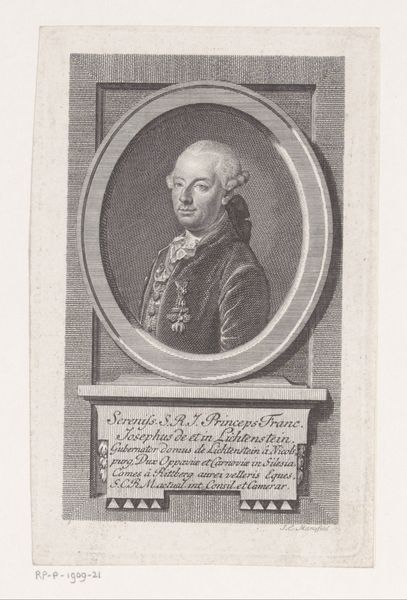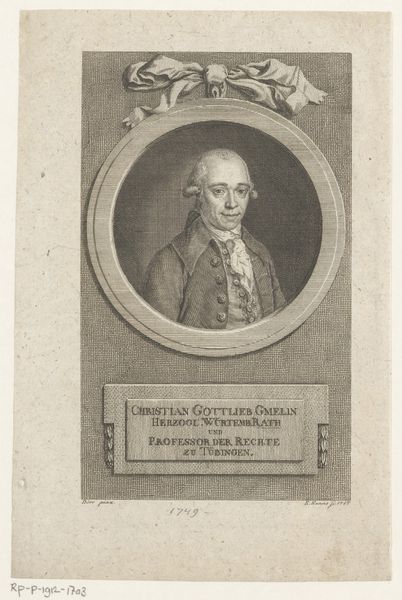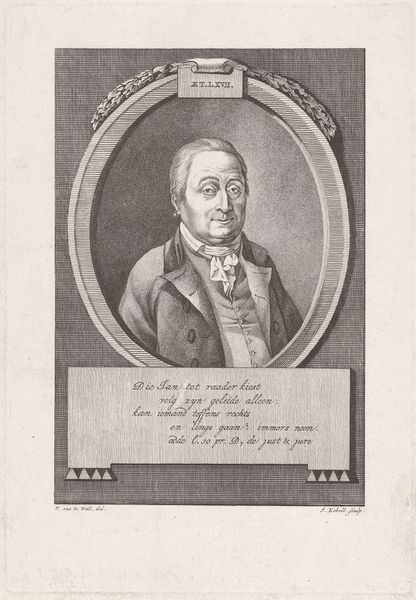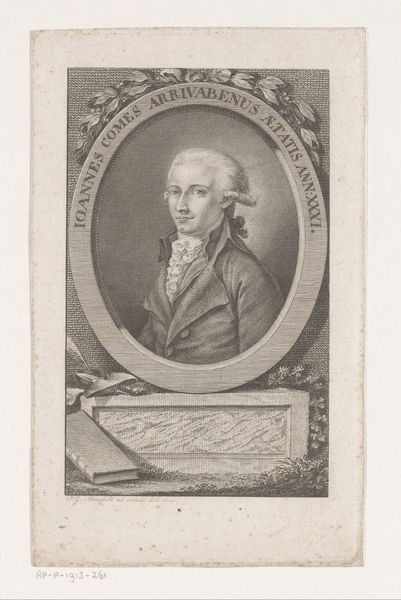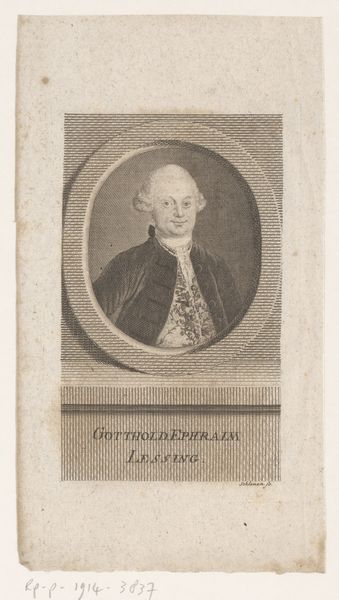
print, etching, paper, engraving
#
portrait
#
neoclacissism
#
aged paper
#
toned paper
# print
#
etching
#
paper
#
19th century
#
engraving
Dimensions: 156 mm (height) x 86 mm (width) (plademaal)
Editor: This is "P.F. Suhm," an etching and engraving on paper from 1789 by F. Schürer. It depicts a portrait of a man, neatly framed within an oval. There's an inscription underneath that gives further details, although I can't quite read it. The whole thing has a very formal, almost stoic feel. What strikes you most about this print? Curator: It's a fascinating example of how the Neoclassical style appropriated and reshaped the human image, isn't it? The very crisp lines, the idealized presentation—they point to a desire for order and clarity that permeated the era. But look closer: Do you see any visual clues suggesting social standing or the sitter's virtues? Editor: Well, his clothing seems pretty standard for the time. It looks like he's wearing a nice jacket and a ruffled shirt. The oval frame itself looks very elegant but seems to obscure clues related to his status. Is the inscription helpful? Curator: Absolutely! It tells us this is "Kammerherr Peter Friderich Suhm," a prominent figure of his time, which connects directly with visual strategies of portraiture used to project a specific image. It says he was a patron of science, born in Copenhagen in 1728. Etchings like this one weren't just about capturing a likeness; they were about creating lasting symbols. Think about how portraiture can create memory through images...does this change how you view the piece? Editor: It does! Knowing who he was and how the portrait served to make him more symbolic reframes it completely. I had initially perceived it just as a standard historical print, but now I am also viewing the artist's intentional creation of his patron's persona. Curator: Exactly! Now when you view the piece, consider the relationship between patronage, portraiture, and Neoclassical artistic movements when depicting public figures in this period. Editor: Thank you! That helps a lot. It makes you realize how much historical and cultural weight can be embedded even in seemingly simple portraits.
Comments
No comments
Be the first to comment and join the conversation on the ultimate creative platform.
